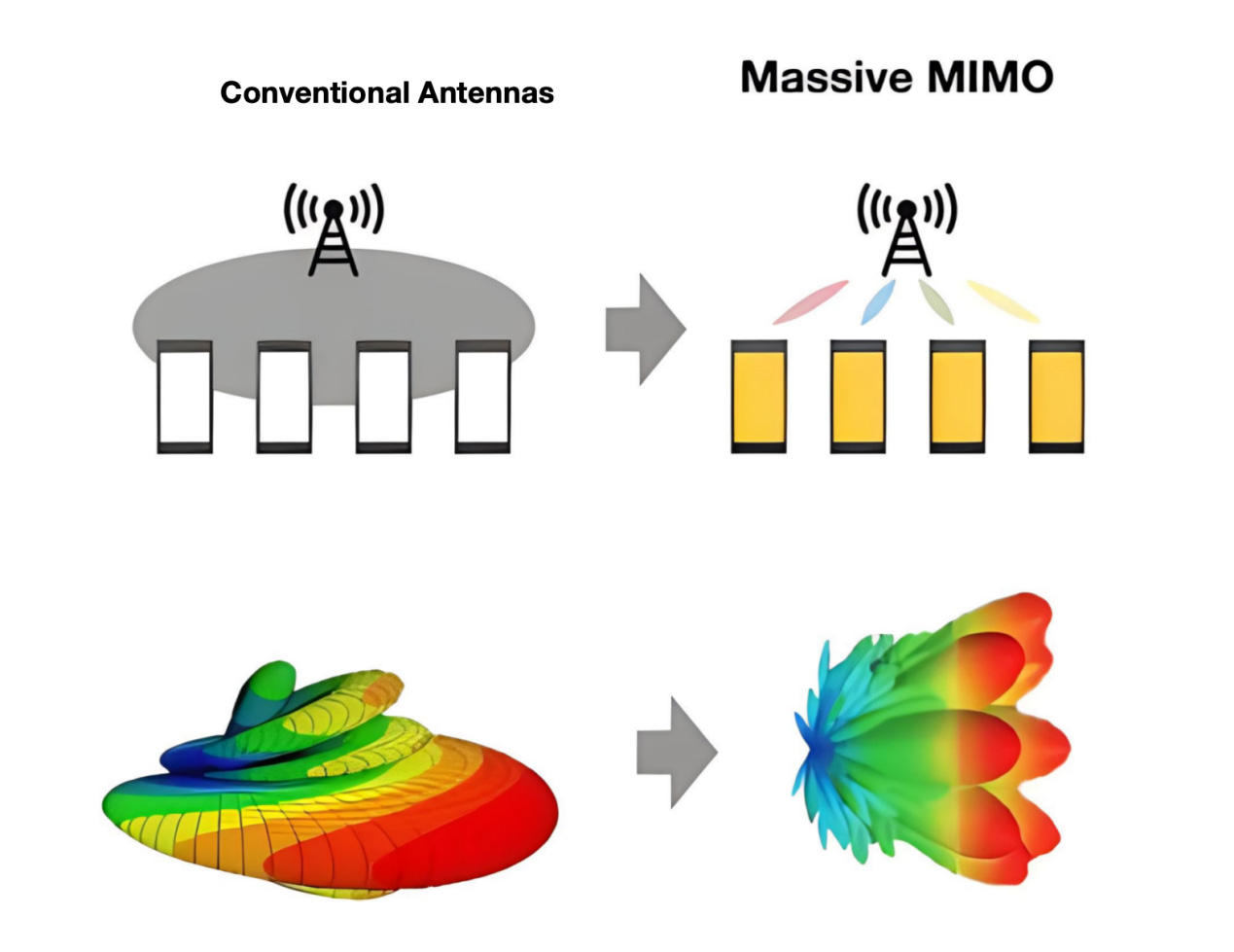Massive MIMO, which stands for Massive Multiple Input, Multiple Output, is a key technology in the development of 5G (fifth-generation) wireless networks. It represents a significant advancement in the way wireless communication is handled, offering improvements in capacity, spectral efficiency, and overall network performance.
Here are some key points about 5G Massive MIMO:
Multiple Input, Multiple Output (MIMO): MIMO technology involves the use of multiple antennas for both transmitting and receiving signals. By employing multiple antennas, the system can use spatial diversity to improve signal quality and increase data throughput.
Massive MIMO: The term "massive" in Massive MIMO refers to the deployment of a large number of antennas at the base station. While traditional MIMO systems might have a handful of antennas, massive MIMO can have dozens or even hundreds of antennas. This large antenna array enables more spatial degrees of freedom, which can be used to serve multiple users simultaneously.

Spatial Multiplexing: Massive MIMO systems take advantage of spatial multiplexing, which means they can transmit multiple data streams to multiple users on the same frequency channel at the same time. This increases the overall capacity of the network and allows for more efficient use of available spectrum.
Beamforming: Massive MIMO systems often use beamforming techniques, where the antennas are used to focus the transmission in specific directions. This can improve the signal quality and coverage for users, especially in environments with high interference.
Improved Spectral Efficiency: By leveraging the benefits of massive MIMO, 5G networks can achieve higher spectral efficiency, enabling more data to be transmitted over the same amount of spectrum. This is crucial for supporting the increasing demand for data-intensive applications and services.
Enhanced User Experience: The combination of increased capacity, improved coverage, and reduced latency makes 5G Massive MIMO well-suited for delivering a better user experience. This is particularly important for applications such as augmented reality, virtual reality, and other real-time, high-bandwidth services.
Challenges: Despite its benefits, deploying massive MIMO comes with its own set of challenges, including increased computational complexity, power consumption, and the need for advanced signal processing algorithms. Additionally, there can be practical challenges in terms of physical space and regulatory considerations when installing a large number of antennas.
In summary, 5G Massive MIMO plays a crucial role in the evolution of wireless communication, providing improved capacity, efficiency, and user experience in comparison to previous generations of mobile networks.

